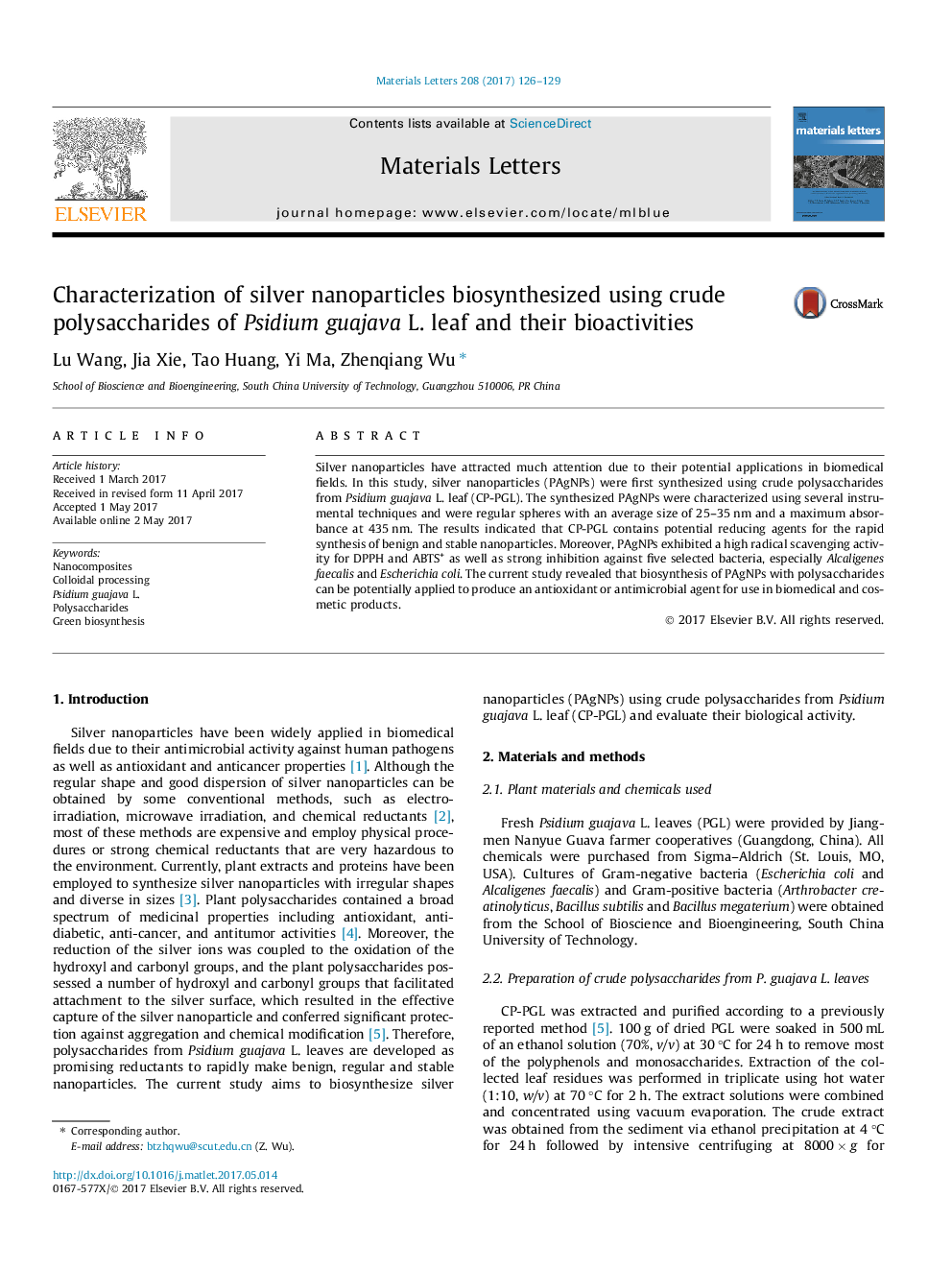| Article ID | Journal | Published Year | Pages | File Type |
|---|---|---|---|---|
| 5462709 | Materials Letters | 2017 | 4 Pages |
â¢Silver nanoparticles (PAgNPs) were synthesized using polysaccharides from Psidium guajava leaves.â¢The synthesized PAgNPs were characterized by several instrument techniques.â¢The PAgNPs morphology is almost spherical and well dispersed with a size range of 25-35 nm.â¢The PAgNPs showed high radical scavenging activity of DPPH and ABTS+.â¢The PAgNPs verified the strong inhibition against A. faecalis and E. coli.
Silver nanoparticles have attracted much attention due to their potential applications in biomedical fields. In this study, silver nanoparticles (PAgNPs) were first synthesized using crude polysaccharides from Psidium guajava L. leaf (CP-PGL). The synthesized PAgNPs were characterized using several instrumental techniques and were regular spheres with an average size of 25-35Â nm and a maximum absorbance at 435Â nm. The results indicated that CP-PGL contains potential reducing agents for the rapid synthesis of benign and stable nanoparticles. Moreover, PAgNPs exhibited a high radical scavenging activity for DPPH and ABTS+ as well as strong inhibition against five selected bacteria, especially Alcaligenes faecalis and Escherichia coli. The current study revealed that biosynthesis of PAgNPs with polysaccharides can be potentially applied to produce an antioxidant or antimicrobial agent for use in biomedical and cosmetic products.
Graphical abstractDownload high-res image (236KB)Download full-size image
